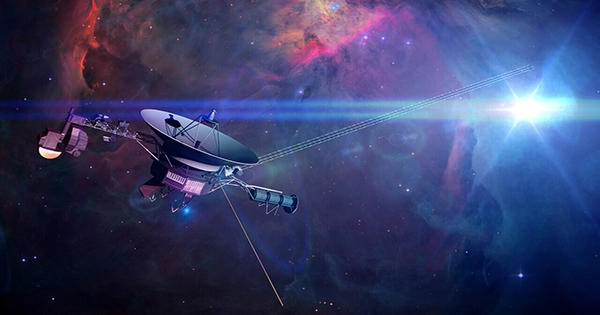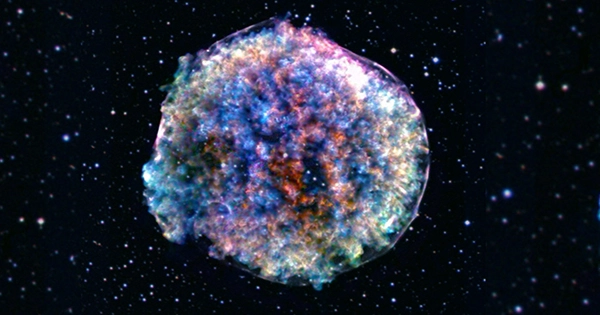Proxima Centauri b is an exoplanet that orbits a M-type star. It is an exoplanet that orbits the red dwarf star Proxima Centauri, the closest star to the Sun and part of a triple star system. It has a mass of 1.27 Earths, takes 11.2 days to complete one orbit around its star, and is 0.0485 AU away from it. It is located in the constellation Centaurus, approximately 1.28 parsecs or 4.2 light-years (4.0×1013 km) from Earth, making it and Proxima c the closest known exoplanets to the Solar System. It was discovered in 2016 and was announced.
Proxima Centauri b orbits the star at a distance of about 0.05 AU (7,500,000 km; 4,600,000 mi), has an orbital period of about 11.2 Earth days, and is estimated to be at least 1.2 times the mass of Earth. It is subject to stellar wind pressures from the solar wind that are more than 2,000 times that of Earth, and its habitability has yet to be determined definitively.
With a mass of 1.17 Earth masses, Proxima Centauri b is very similar in size to Earth. In comparison to our Earth’s year-long orbit around the sun, it orbits its star in only 11.2 days. This means that Proxima Centauri b is much closer to its star than Earth is to the sun. However, because the star is a red dwarf, much smaller and cooler than our sun, its orbit is within Proxima Centauri’s habitable zone. Interestingly, Proxima Centauri b receives about the same amount of solar energy from its star than Earth does from our sun.
A paper published in May 2019 based on recent Spitzer Space Telescope data concluded that Proxima Centauri b did not transit its sun relative to Earth, and attributed previous transit detections to correlated noise. TESS satellite data confirmed the absence of transits in 2021.

Physical characteristics
Mass, radius, and temperature
The orbit of Proxima Centauri b has not yet been measured in terms of apparent inclination. Proxima b has a minimum mass of 1.17 M☉, which is the actual mass if its orbit were seen edge-on from Earth. The mass can be calculated once the orbital inclination is known. More tilted orientations imply a higher mass, with 90% of possible orientations implying a mass less than 2.77 M☉. If Proxima Centauri b’s orbit is coplanar with that of the candidate exoplanet Proxima Centauri c, the true mass of which has recently been estimated using various combinations of its spectroscopic orbital parameters, Gaia DR2 proper motion anomaly, and astrometric measurements, then Proxima b’s true mass can be estimated.
The exact radius of the planet is estimated to be slightly larger than that of Earth, but the precise degree is unknown, though recent estimates suggest around 1.3 R. Its radius is smaller if it is composed of rocky material and has the same density as Earth. It could be larger if its density is lower than Earth’s or if its mass is greater than the minimum mass. Proxima Centauri b, like many super-Earth-sized planets, may have an icy composition similar to Neptune, with a thick enveloping hydrogen and helium atmosphere; this likelihood has been calculated to be greater than 10%.
The planet’s equilibrium temperature is 234 K (−39 °C; −38 °F), which is slightly colder than Earth’s 255 K (−18 °C; −1 °F). The exact surface temperature of the planet cannot be determined at this time due to the unknown of multiple influencing factors determining the temperature. Such factors include whether or not there is an atmosphere or tidal heating.
Host star
Proxima Centauri, an M-type red dwarf, orbits the planet. The star has a radius of 0.14 R☉ and a mass of 0.12 M☉. It is 4.85 billion years old and has a surface temperature of 3042 K. The Sun, on the other hand, is 4.6 billion years old and has a surface temperature of 5778 K. Proxima Centauri rotates once every 83 days and has a luminosity of approximately 0.0015 L☉.
Despite being the closest star to the Sun, Proxima Centauri is not visible to the naked eye from Earth due to its low luminosity (average apparent magnitude of 11.13).
The star Proxima Centauri is a flare star. This means that it experiences dramatic increases in brightness and high-energy emissions on occasion as a result of magnetic activity that would cause large solar storms. On March 18, 2016, a superflare with energy of 1026.5 joules was observed. The March 2016 flare was approximately 68 times brighter than usual, making it slightly brighter than the Sun. Surface irradiation was estimated to be 100 times that required to kill even UV-resistant microorganisms. Total ozone depletion of an Earth-like atmosphere would occur within a few hundred thousand years based on the rate of observed flares.
Orbit
Proxima Centauri b orbits its host star every 11.186 days at a semi-major axis distance of approximately 0.05 astronomical units (7,000,000 km; 5,000,000 mi), which means the exoplanet is one-twentieth the distance between the Earth and the Sun. Mercury, the planet closest to the Sun, has a semi-major axis distance of 0.39 AU.
















